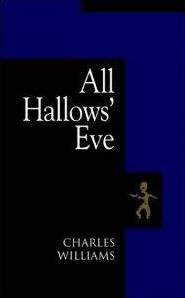 By CHARLES WILLIAMS (Regent College Publishing; 1945/2003)
By CHARLES WILLIAMS (Regent College Publishing; 1945/2003)
This was the final novel by the UK’s Charles Williams, and an excellent example of his peculiar brand of metaphysical spiritualism. It’s certainly no easy read, being steeped in the tortured psychology that typified his fiction, in which people are forced to confront their spiritual shortcomings through confrontations with the supernatural. Neither God nor Jesus are ever mentioned, but the novel is packed with Biblical allusions.
In summary the narrative doesn’t sound too heavy: it involves a pair of recently deceased women navigating their way through the spirit world, while on the earthly plane an evil magician is on his way to becoming the new messiah. Inevitably the ghost women are sucked into the magician’s vortex, as are their still-living colleagues, all precipitated by a painting that presents the magician and his followers as walking cockroaches.
It’s not unlike a more thoughtful and introverted take on GHOST, although such a description does this insanely dense and perplexing account a disservice. In truth there’s nothing else quite like it outside Charles Williams’ other novels—of which ALL HALLOWS’ EVE, believe it or not, is one of the most accessible.
It’s Williams’ portrayal of the spirit world as, essentially, an alternate branch of reality that truly renders this book unique. As Williams’ longtime friend and admirer T.S. claims in his 1948 introduction, Williams fully believed in the paranormal realm he wrote about, as “To him the supernatural was perfectly natural, and the natural was also supernatural.”
The afterworld depicted in this novel comes with an incredible number of rules and physical properties, yet always seems entirely plausible due to the book’s spiritual grounding and psychological insight. Yes, Charles Williams’ depiction of the supernatural is as much psychologically-based as it is material, with the fears, hopes and disillusionments of his characters intricately and voluminously laid out in a succession of bulky paragraphs.
Again, this far from an easy read. It does at least satisfy as a horror novel, with some truly haunting depictions of the afterworld (the hallucinatory opening chapter is especially noteworthy in this regard) and demonically inspired imagery that’s right out of a John Carpenter movie (such as a deformed dwarf the magician creates to house the souls of the two ghost women on the mortal plane). It is, however, the author’s conviction and intelligence that ultimately linger.
